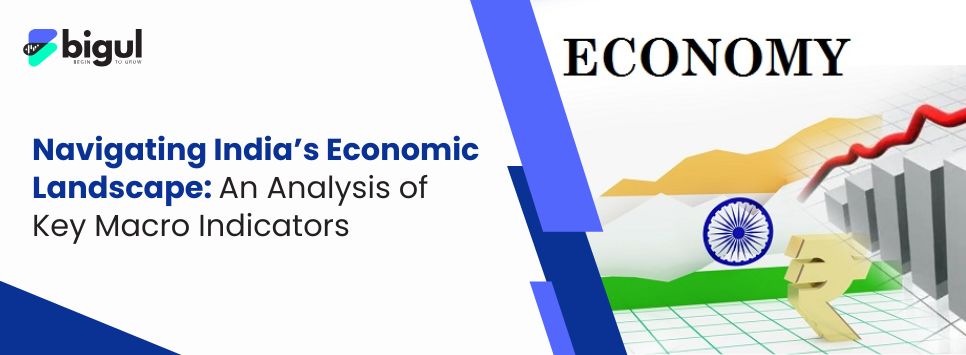India's economic growth has observed a dynamic shift over the past few quarters. A dataset from Q1 2023 to Q4 2024 provides a critical view of the key Indian economy indicators.
Various variables in the indicators include the All India House Price Index and the balance of payments, such as current account, FDI, and portfolio investments.
Meanwhile, various domestic metrics such as India's GDP growth, government expenditure and capital formation have shaped the nation's financial landscape.
Let's delve into more detail
Rising House Prices: Trends in the Residential Sector
All India House Price Index is one of the most significant Indian economic indicators. It evaluates the value of residential property across the country. The year of base for the measure was 2010-11. The index is a measure of the mood in the market and also housing demand as well as other important indicators in the real property markets in India.
Steady Growth in India's House Price Index
The House Price Index had a value of 303.91 during Q1 2023, which grew to 308.6 during Q3 2023 then to 313.55 in Q4 2023 before reaching 323.26 in Q4 2024. Indian property prices continue to experience a steady upward trajectory because homebuyer demand remains strong, and their preferences have shifted since Q1 2023. While the quarterly growth of the housing market has remained moderate, the two-year trend suggests that economic confidence has surged in real estate investments.
Impact on Investors and Homebuyers in India
Real estate in India has become a lucrative investment domain for domestic as well as foreign investors because of soaring house prices. For Early homebuyers, a competitive housing market means a great ROI on their early investment.
On the other hand, policymakers should monitor housing affordability to make sure that the inflation in real estate does not increase more than income growth.
The steady increase in India's House Price Index suggests a broader economic stability. As India grows, real estate investment remains a key driver of wealth creation and an essential indicator of economic health.
Volatility in the Balance of Payments: External Sector Dynamics
An indicator that offers vital information about the financial state of India across its international boundaries is the (BoP) Balance of Payment system. The Balance of payment system contains five major components, which include current account balance, foreign direct investment (FDI) , portfolio investments, merchandise trade and monetary movements. Understanding these metrics is crucial to understanding India growth in the International market.
Current Account Balance Fluctuations
The current account balance of the Indian economy has revealed a significant volatility. For Instance, one can observe a record negative balance of Rs -11,155.03 crore in Q1 2023. Meanwhile, in Q3 of 2024, the overall deficit widened to Rs -93,670.16 crore. It has now rebounded to a positive balance of Rs 75227.70 Cr in Q4 2024.
What does it mean?
The fluctuation in the number of transactions could be an outcome on the efficiency of trade between India in terms of exports, remittances and services. The shift towards an equilibrium of positive in the final quarter of 2024 may suggest an improvement in the performance of exports. These changes have huge consequences for exchange rate policy as well as the administration of liquidity within India.
Foreign Direct Investment (FDI) Trends
The data demonstrates rising foreign direct investment patterns between India and international locations. According to the BoP – Direct Foreign Investment in India Net report, results for Q4 2024 came out to Rs 84,73,866.88 crore due to steady investor confidence. Foreign capital from India withdrew Rs 95,715.35 crore as part of direct investments abroad during Q1 2024.
Implications
High FDI inflows into India give an optimism to growing investors. It can be the result of reforms to industries, economic development, and incentives from the government. In addition, the patterns of FDI outbound could be a sign that Indian investors are diversifying their portfolios or are looking for more lucrative opportunities abroad.
Merchandise and Monetary Movements
RBI data provided a stunning insight into the trade balance in the balance of trade that exists between India and other nations via debits and credit for goods. In Q1 2023 the total credit for products was 52,277.93 crore, and it was the sum of debits to merchandise was 56,309.40 crore, leading to the creation of a tiny surplus in trade.
Monetary Movements
The transactions that occur in the financial market reveal the dynamic nature of capital flows through India. Although these numbers may appear small on their own but their cumulative effect greatly influences the balance of payments position. balance of Payments position.
The BoP indicators suggest that India's economy is facing both opportunities and challenges from the outside. While FDI flows as well as strong balances in the current account in the fourth quarter of 2024 suggest an optimistic outlook for the economy.
However, the fluctuation of trade and investment flows underscores the need for solid macroeconomic policies. Monitoring these indicators on a regular basis is essential to ensure the stability of the economy as well as to keep growth going in India.
Conclusion
The information about the time span between Q1 2023 and Q4 2024 provides a comprehensive overview of the present economic and financial situation within India. While the rising index of house prices may be a sign that there is hope but the fluctuations within the balance of payments data highlight that macroeconomic policies are crucial.
In addition, the robust increase in indicators of the domestic economy like GDP and government spending, as well as capital formation, demonstrate India's dedication for sustainable economic growth. Since India is going through these transformations in its economy, it's vital to have a balanced approach to monetary and fiscal policies. crucial to ensure stable development and stabilisation.
Also Read | RBI Repo Rate Cut: Home Loan Rates Dip, but New Borrowers May Miss Full Benefit









.jpg)
.jpg)
